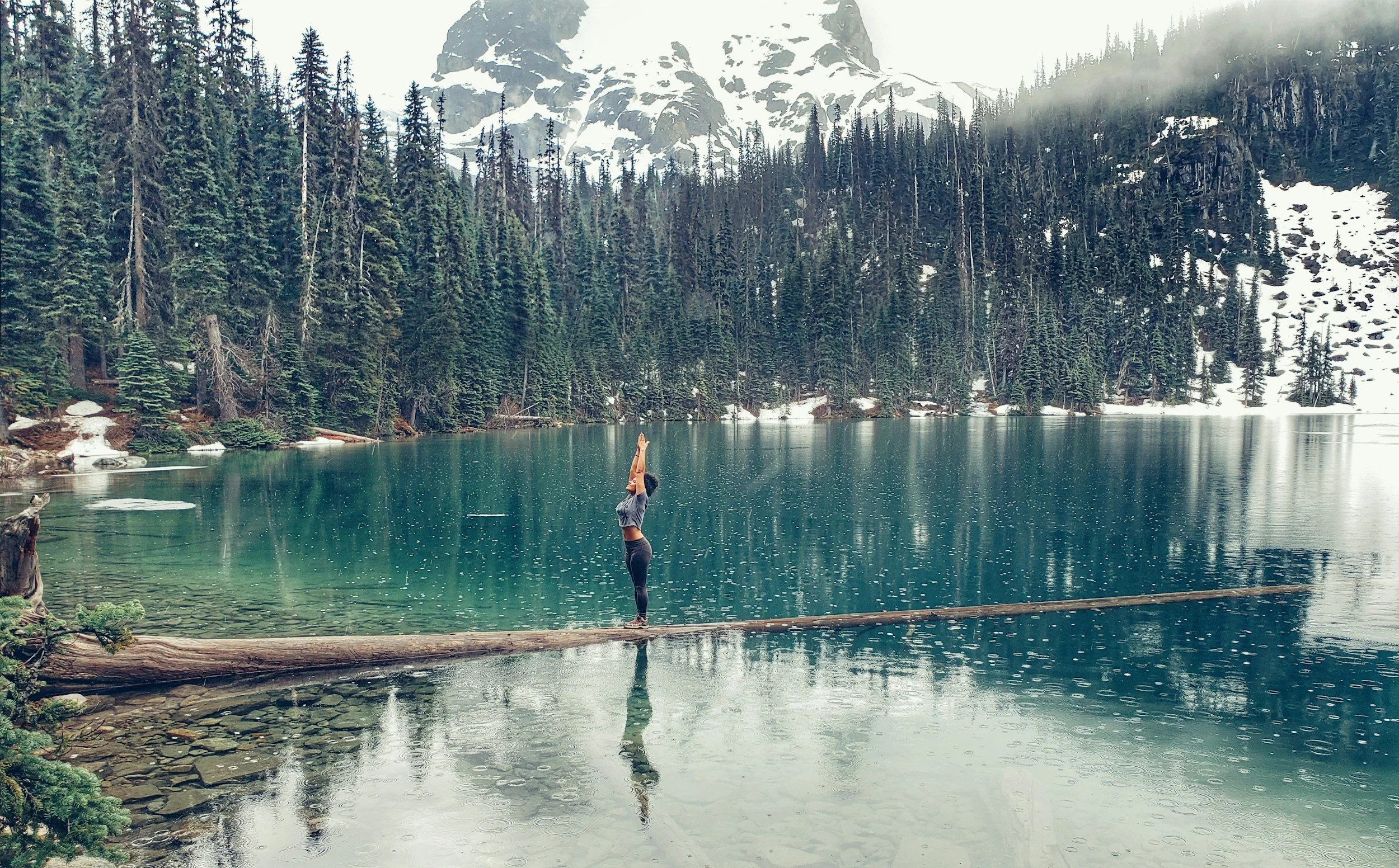Tips for Winter Yoga Practice:
Create a Cozy Space: Make sure your yoga space is warm and inviting. If you practice near a heater or with a blanket, you’ll stay comfortable. You might also want to wear layers that you can remove as your body warms up.
Use Props: Blankets, cushions, and blocks can help support your body, especially if you're feeling a bit stiffer in the winter months. They can also help deepen stretches and make certain poses more accessible.
Focus on Grounding: Winter is a time when people can feel more introspective or even a bit lethargic. Yoga can help you stay grounded and centered, so you may want to add more calming poses, deep breathing, or meditation to your routine to stay mentally balanced.
Stay Hydrated: It's easy to forget to drink water in the winter, but hydration is just as important in colder weather. Drink water before, during, and after your practice.
Listen to Your Body: Winter can be hard on joints and muscles due to the cold, so if you’re feeling extra tight or stiff, take extra time to warm up and move slowly through your practice.
Yoga Exercise Below:
Remember to alway listen to your body and not force anything. Often my routines are designed by listening to my body and slowly moving into your favorite routines.
A good winter yoga routine for practicing at home should focus on warming up your body, improving flexibility, and reducing any tension that might come from sitting or being indoors more often due to cold weather. In winter, our bodies tend to be more stiff, and we might feel less motivated to move, so it’s important to create a routine that encourages warmth, comfort, and relaxation while keeping you energized.
My favorite mat that is easy to clean, has a good cozy cushion for my knees is the Jade Yoga Mat.
Here’s a winter-inspired yoga workout you can do at home that focuses on flexibility, warmth, and a sense of calm:
Winter Yoga Routine (30-40 minutes)
1. Begin with a Warm-Up (5 minutes)
Child’s Pose (Balasana): Start by sitting on your heels and reaching your arms forward on the mat. This gentle stretch helps to relax the body, lengthen your spine, and calm the nervous system. Stay here for 5-10 breaths.
Cat-Cow Stretch (Marjaryasana-Bitilasana): Come onto all fours, hands under your shoulders and knees under your hips. Inhale as you arch your back, lifting your chest (cow), then exhale as you round your back and tuck your chin (cat). Flow through 10 rounds, synchronizing breath with movement.
2. Warm Up the Spine (5 minutes)
Downward-Facing Dog (Adho Mukha Svanasana): From all fours, tuck your toes and lift your hips toward the ceiling, forming an inverted "V" shape. This pose stretches your hamstrings, shoulders, and spine. Keep your knees slightly bent if your hamstrings are tight, and hold for 5-10 breaths.
Low Lunge (Anjaneyasana): Step one foot forward between your hands and drop your back knee to the floor. Press your hips forward to stretch your hip flexors and open your chest. Hold for 5 breaths, then switch sides.
3. Build Heat (10-12 minutes)
Sun Salutations (Surya Namaskar): This is an excellent way to warm up the whole body. You can modify it to your fitness level, but try 3-5 rounds of a basic sun salutation to get your blood flowing. Here’s a modified version:
Mountain Pose (Tadasana) – Stand tall, arms by your sides.
Inhale and reach arms up (Upward Salute).
Exhale and fold forward (Forward Bend).
Inhale and lengthen the spine (Half Forward Bend).
Exhale, step back into a plank pose, and lower to the floor (Chaturanga).
Inhale into Cobra or Upward-Facing Dog to open the chest.
Exhale back to Downward Dog for 5-8 breaths.
Inhale and step forward into a low lunge, then return to standing.
4. Target Hamstrings & Hips (5-7 minutes)
Pyramid Pose (Parsvottanasana): Stand with feet about 3 feet apart. Turn your front foot forward, and the back foot at a slight angle. Hinge at your hips to bring your chest over your front leg, stretching the hamstrings. Hold for 5-7 breaths, then switch sides.
Seated Forward Fold (Paschimottanasana): Sit with your legs extended in front of you. Inhale and lengthen your spine, then exhale as you fold forward over your legs. Hold for 5-10 breaths to deepen the stretch in your hamstrings and lower back.
5. Open the Chest & Shoulders (5-7 minutes)
Crescent Lunge with a Chest Opener: From a low lunge, inhale and raise your arms above your head. On the exhale, gently interlace your fingers behind your back, opening your chest and reaching the hands toward the floor. This stretches the chest, shoulders, and hip flexors. Hold for 5-7 breaths and switch sides.
Thread the Needle (Supta Sukhasana): On all fours, bring your right arm underneath your body and rest your shoulder and ear on the mat. This provides a deep stretch to your upper back and shoulders. Hold for 5 breaths, then switch sides.
6. Cool Down (5-10 minutes)
Reclining Bound Angle Pose (Supta Baddha Konasana): Lie on your back, bring the soles of your feet together, and let your knees drop open to the sides. Place your hands on your belly or by your sides. This passive stretch opens the hips and helps you relax. Hold for 5-7 breaths.
Legs Up the Wall (Viparita Karani): Sit sideways against a wall and slowly swing your legs up, lying flat on your back with your legs resting vertically against the wall. This gentle inversion promotes circulation and helps reduce stress. Hold for 5-10 minutes.
Savasana (Corpse Pose): End your practice by lying flat on your back with your arms by your sides and palms facing up. Allow your body to fully relax and release any tension. Stay here for 5-10 minutes, focusing on your breath and enjoying the stillness.


